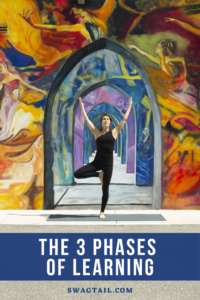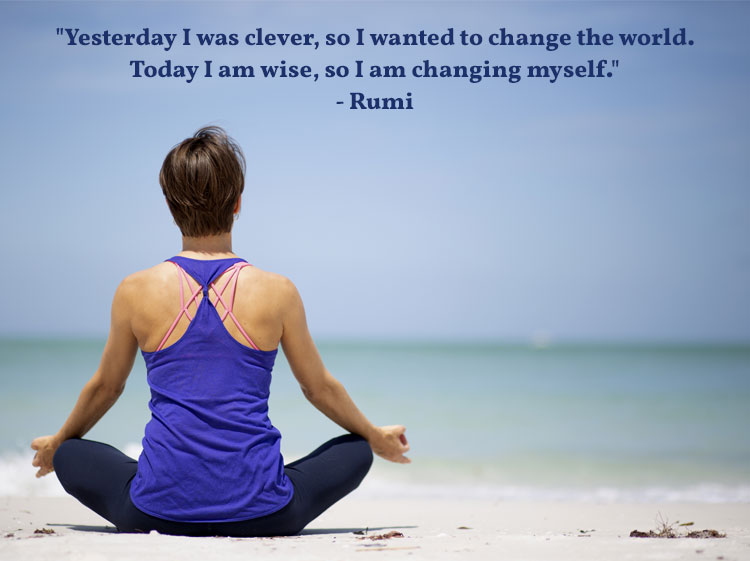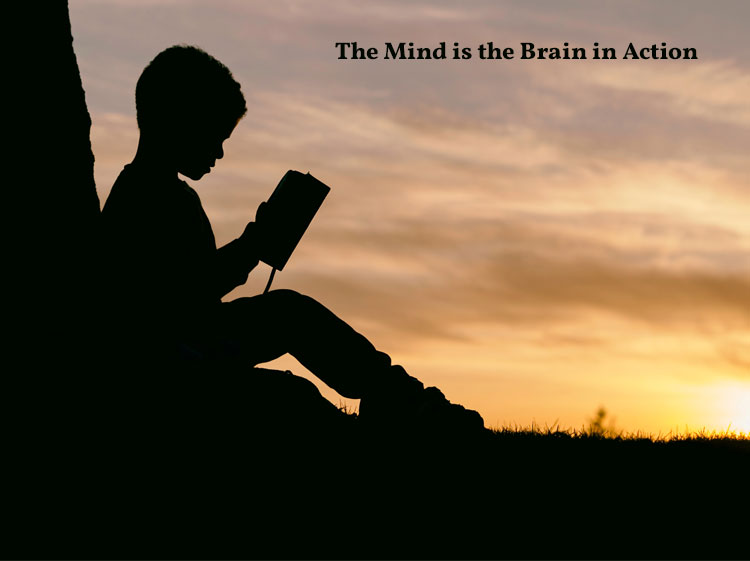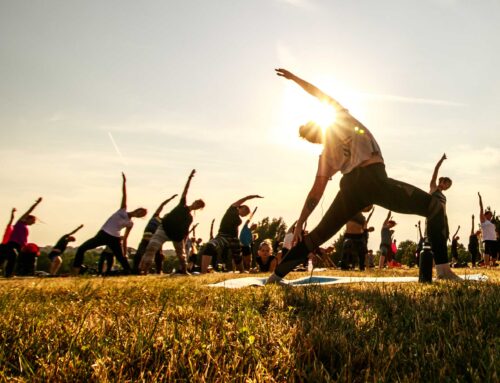 Learning is the pathway to new growth and increased awareness. It opens doors to possibilities, and keeps you excited about life. But what are the three phases of learning? And how do you derive meaning from your education so you can pass it on to your students in a deliberate way? The answers are found in this article–answers that inspire your students to continue a yoga practice both with you and confidently on their own as well.
Learning is the pathway to new growth and increased awareness. It opens doors to possibilities, and keeps you excited about life. But what are the three phases of learning? And how do you derive meaning from your education so you can pass it on to your students in a deliberate way? The answers are found in this article–answers that inspire your students to continue a yoga practice both with you and confidently on their own as well.
If you’ve been a part of our Swagtall community for a while, you know I’m a big fan of ongoing learning. I love to read and often share amazing books to grow your yoga business (and expand personally as well).
My parents modeled this well for me as a young child. I’m the oldest of my four siblings and both my mom and dad were in their early twenties when I was born. They worked during the day, and went to school at night. In fact, it took my mom over a decade to proudly receive her bachelor’s degree.
But it wasn’t their pursuit of formal education that taught me to enjoy the learning process. It was woven into the daily fabric of our lives. Our home was decorated with fully-stocked bookshelves in many rooms. Books were also cherished gifts and we read together as a family each night before bed.
Thankfully with the expansion of technology, you can easily learn new information even if books aren’t your thing. No matter which format you choose, however, you want to recognize the three phases of learning. This will allow you to get the most out of the process. And you’ll build momentum toward the mastery you seek on any given subject.
Photo Credit: Ember and Earth Photography
THE VALUE OF LEARNING
If you’re like me, you want your students to internalize yoga.
You want them to move beyond the basics of the postures (which is a really important foundation) and the meaning behind those movements. You want them to have the skills to unroll their mats at home and know how to practice safely and intuitively. Plus your goal is to have them understand the philosophy of yoga and connect deeply with their spiritual nature.
More importantly, as a teacher, you want to establish a business model that encourages students to keep practicing with you. This is true even if you’re a part time teacher. The more people that show up when you teach, the more cash flow you have, more profit you can keep, and the longer you can continue doing what you love.
What’s special about being a yoga teacher is that you’re simultaneously a student as well.
You’re just often many steps ahead of those individuals in your classes. When you recognize the value of learning at each of these levels, you show up as the prepared and knowledgeable educator that you are. You also connect more authentically with your students because your passion for the practice remains high over time.

Photo Credit: Ember and Earth Photography
SPT LEARNING
If something is simple to say and simple to repeat, you’re far more likely to remember it. That’s why I use acronyms for important concepts.
SPT learning is the acronym for the three phases of learning.
- S stands for study
- P represents practice
- T stands for teach
In the three phases of learning you study first, practice second, and teach third. These steps do go in order most times. Yet you can be involved in all three phases at once on the same subject.
For example, one role you play is that of a yoga student. Yoga is something you practice each time you step on your mat. That’s when you’re in the phase of practice. Plus, you also apply the principles of yoga in many of your life experiences (like handling a conflict).
Then as a yoga teacher, you guide others through the practice. You might also be a parent teaching your kids the values of yoga–like honesty and self-responsibility.
Go Deeper into SPT Learning
We’ll cover SPT learning in greater detail below. You can download the worksheet above to gain even more clarity about where you stand in the learning process. This will add clarity to your current roles as a student, practitioner, or teacher in various aspects of your life. I suggest you print this form and keep it close by as you read on.
S = STUDY
The first of the three phases of learning is the study of new information. This is when you’re exposed to a new idea, concept, behavior, skill, or experience. Basically, the neocortex (which is the thinking brain) is always gathering information from your environment. Each time you take on the conscious role of a student, you modify this area of the brain.
This is important because the brain is made up of 100 billion neurons, and these nerve cells can store information as well as communicate with each other. Neurons begin to fire in the brain as you learn. You also forge new neural networks as these neurons fire together in a community. This helps you understand and access these new concepts more easily.
As a result of ongoing learning, your brain physically changes. Experience enriches the circuitry of the brain neurologically, and in turn, releases a cascade of chemicals from the limbic system. You know these as emotions.
So studying changes how you think and how you feel.
Exposure to new ideas, paired with these emotional markers, alters your mind. It expands your perspective of the world. Studying also becomes the gateway to new possibilities for yourself and your future.
Ways to Study as a Yogi
- Read an inspiring book (about yoga or yoga business)
- Attend a workshop (in person or virtually)
- Listen to a podcast, or
- Complete an online course (try one of our Swagtail programs now)

Photo Credit: Aaron Burden
P = PRACTICE
Learning new information forms new neural networks in the brain. However, repetition of using those neural networks is what helps them stay connected over time. That’s where practice comes in.
Practice is when you take the theoretical or philosophical knowledge you’ve gained via your studies and apply them personally. This can involve contemplation of a topic to understand it more deeply. You can talk about a topic with your friends and refine your perspective even further. You also also take specific, deliberate actions–like practicing a skill–to internalize your learning.
Does the repetition of sun salutations sound familiar?
What’s really important is that just as neural networks form through study, they disconnect without practice. And this can happen in a matter of days! You can forget what you learned when you remove your attention from the subject. That’s why practice is so important if you want to internalize a new skill long-term or make lasting changes in your life.
Ways to Practice as a Yogi
- Schedule multiple days a week to practice (and stick to those good habits)
- Work continuously on a pose (or pose category)
- Use yin yoga to increase fascia health (and compliment your yang, active practice)
- Journal about your learning

Photo Credit: Ember and Earth Photography
T = TEACH
Teaching is the last of the three phases of learning. Teaching is when you can demonstrate your acquired knowledge with ease and clarity. This is the stage in which you pass on your learning to others. It’s how you continue to practice sharing those ideas and skills in new ways.
And as a teacher, you’re continually getting feedback from your students. They ask new questions and you create new ways to explain concepts. New research might be discovered and you can add to your existing database on any given subject.
Keep in mind that you’ve got many natural talents. Thus, you want to align how you teach with your existing strengths. This could be teaching via written material. You can teach through video or auditory means. You might even teach face-to-face, or simply incorporate a variety of these means as a teacher.
Ways to Maximize the Teaching Role
- Create memorable experiences for your students
- Utilize deliberate sequencing (whether teaching yin, hatha, vinyasa or other styles)
- Record your teaching, with audio or video, and refine your verbal cues
- Get feedback from your community

Photo Credit: Ginger Kitten
KEY INGREDIENTS TO SUCCESSFUL LEARNING
There are three essential skills to possess so that you can learn successfully. Each skill is relevant when you study, practice, and teach. They all revolve around asking deliberate questions–and asking them often.
(1) Curiosity
According to the Merriam-Webster dictionary, the definition of curiosity is “an interest leading to inquiry.” Basically it’s having an open mind that leads to action. When you’re a yoga student, you can study with new teachers and entertain new styles of yoga. As a yoga professional, you can turn to recommended yoga books or listen to business podcasts.
When you continue to explore ideas in practice, you want to maintain a beginner’s mind. This is how you enjoy the newness of learning at any stage of implementation.
Then, as a teacher, you inquire about the learning experience of your students. You’re open to their ideas and suggestions. You ask for feedback and remain open-minded to the answers. Basically, you keep curiosity as the ongoing current at each of the three phases of learning.
 (2) Critical Thinking
(2) Critical Thinking
Critical thinking is also important at all three phases of learning. This trait is predominantly associated with being a student, yet you also use it frequently during the practice and teaching stages to attain even more mastery of a topic.
So what is critical thinking?
It’s your ability to analyze the information presented to you–whether that source is outside of yourself or from inside your body-mind. Critical thinking is how you synthesize that information. It’s also how you draw connections from different pieces of data and have it make sense to you.
Most importantly, you don’t take information at face value in any of the three phases of learning. You ask questions. You dig deeper. And you verify the information aligns with your worldview or goals for the future before moving on.
(3) Reflection
When you embody curiosity and critical thinking, this third skill becomes that much easier to master. This is the skill of reflection.
Reflection is where you give a topic careful consideration. It’s when you place your focus in one direction to gain more clarity. As a student, reflection can be a review of the material you just studied in order to confirm you know the subject well.
In every yoga practice, reflection takes place in savasana. This is when your body becomes still so you can internalize the effects of your practice and connect with the broader aspect of your spiritual nature.
Then, as a teacher, you reflect on how you are doing as a teacher. You want to be your best, and draw out the same from your students. This often means you look at the material you’re teaching and keep it up to date. You also check to see if what you’re teaching resonates with your students (and make changes if it’s not).
PUTTING IT TOGETHER
There are three phases of learning–whether that be yoga, yoga business, or any other subject on the planet. First you’re a student. Then, you practice what you’ve learned. Finally, you take your knowledge and teach it to others. When you do this well, you move toward mastery. You glean value from the time you spend in each role and you make more meaningful connections with others–as you recognize that they, too, are also in one of the three stages of learning themselves.
Take Action Now:
- Download the worksheet above to maximize your learning as a student, practitioner, and teacher.
- Share what roles you’re playing in the comments section below. Where are you a student and what are you studying? How are you practicing (and internalizing) that information? And in what ways do you share what you are learning with others?
- Remind your students this week of the role they are playing on the mat as a student. Then encourage them to take ownership of their learning, and practice it on their own. Even inspire them to teach someone else what they learned with you–even if a nugget of wisdom from your yoga class theme or an insight they had about themselves on the mat.








Leave A Comment